Queen Creek Epoxy flooring is often used in garages and industrial flooring settings. Epoxy is made of resins that, when applied, coat and protect the floor from damage and debris. Durable epoxy flooring provides a waterproof barrier, is resistant to chemicals and chemical spills, can withstand mold and oil contact, and does not require much maintenance at all to keep clean and functioning.
Barefoot Surfaces knows all too well about tire marks and what to do to get rid of them, here we give you some tips and tricks to clean your epoxy floor coatings.
Although it can endure many of the common damages that other floors can not, tire marks become an epoxy floors nemesis. The perfectly clean and coated floor becomes a race track and path of rubber resistance. Simply pulling in to the garage or leaving too quickly can leave you with tire marks all over. Unfortunately they require a stronger method of cleaning than mopping alone to get your epoxy floor back to spic and span – without the use of harsh chemicals, which is a major win.
Many of our clients (and you if you are reading this) wonder how the small amounts of rubber actually transfer to the epoxy floor and what to do to get rid of them. The most frustrating part of the entire experience is more than likely how ugly the black tire prints are making your once gorgeously clean epoxy floor.
The reason that tire rubber can stick to epoxy flooring is because of plasticizers. That is basically a big fancy word for polymer (plastic) compounds that are used in the tire industry to create a more flexible rubber material. This new flexible compound allows the tire to have more traction and helps to keep it soft and pliable in all types of weather. The heat from driving tends to make these aforementioned plasticizers relax and leak out of the tire. Once driven and revved back up, the tires leave these black and oily marks on the epoxy coating.
Although the most common reason that these stains occur are driving in and out of the garage, if a car sits for long periods of time in one spot, the same thing can occur as the oily plastic bits seep out of the tire, but at a much slower pace.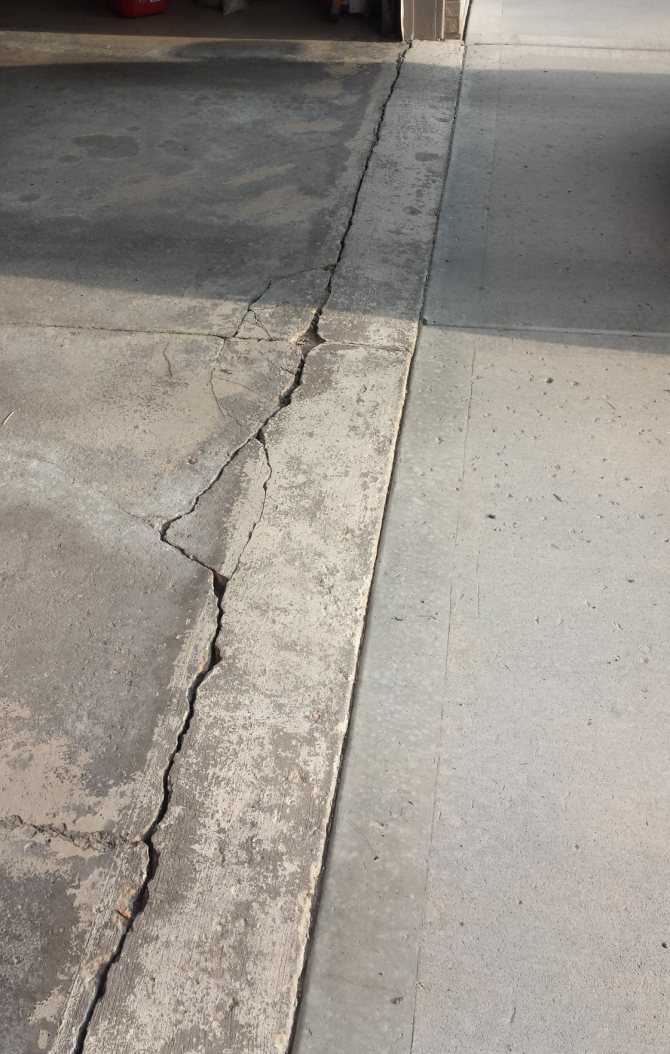
Queen Creek Epoxy Floor Coatings & Garage Remodels | Barefoot Surfaces
Watch this video on YouTube
I’m sure you are curious how easy is it to remove tire marks from your Queen Creek garage epoxy floor. Of course much of it depends on the quality of the epoxy floor coating in Queen Creek and how long the tire marks have been there before you decided to try and get rid of them. We’ve met a lot of procrastinators along the way.
If you had a high quality sealer coated on top of your epoxy floor, the easier the clean up. When an epoxy floor sealer cures it creates a cross linking pattern that gives the sealer strength and density. The greater the strength and density of the sealer, the less chance that these tire marks will create a permanent home on your garage floor. Basically we are saying that there is less of a chance of the plasticizers seeping further into the epoxy floor coating than just remaining on the surface.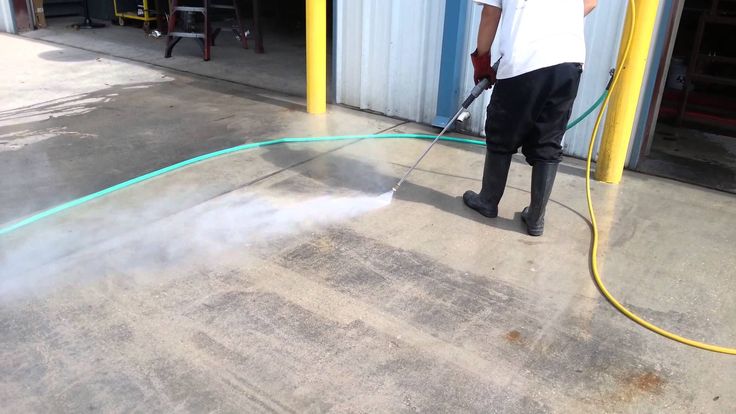
It is not always difficult to remove these annoying tire marks and can usually be remedied with soaking the area for a few minutes first with a heavy duty cleaner such or a concrete degreaser (which is designed to get rid of problems like this). One you’ve let it soak for a few minutes – we suggest 10-15, a stiff bristle brush should do the trick to remove the tire marks. Note of caution: don’t scrub too hard if you are using a Brillo pad or the like – sometimes this can take of the high gloss finish of the sealant. As a worst case scenario and for the trickiest stains you can try Goo Gone as well, found at most hardware stores.
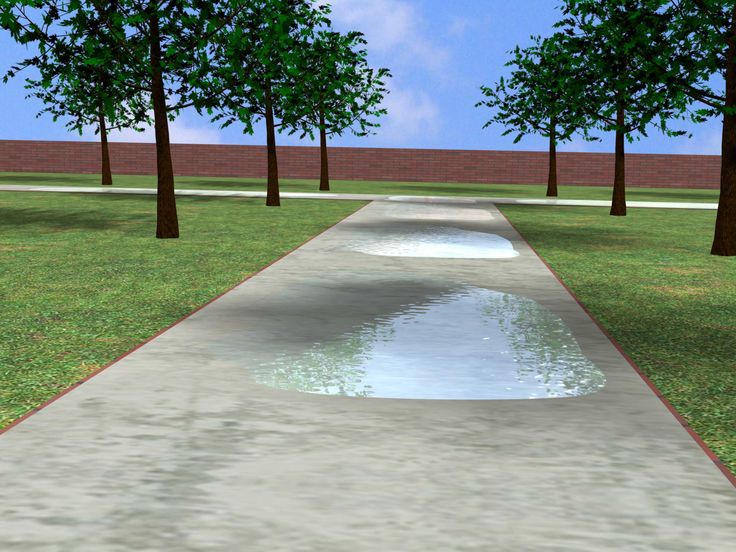
Voila! Brand new epoxy flooring. For more information about patio epoxy floors in Queen Creek, our contractors can help! Call Barefoot Surfaces today!
Published By:
Barefoot Surfaces – Ric Ramirez
740 E Redondo
Gilbert, AZ 85296
Phone:602-931-7656
Email: [email protected]
Website: https://barefootsurfaces.com
Posted: July 20, 2016
If you happened to have recently redone your garage floor or driveway, the last thing you will want to see on your fresh epoxied floor is tire marks. However, tire marks are more than common in car garages, even on brand new epoxied ones.
There are three different types of tire markings that you can get in your garage.
To understand how to clean tire marks of your garage floor, you'll first need to understand what tire marks are.
Most often tire marks on concrete garage floors or driveways are caused by hot tires. For example, if your car has been sitting in the garage for a while, your tires will be cold to touch. However, if you've just parked your car inside your garage, after going to the mall or for a drive, your tires will be hot to touch. This is because heat builds up in your tires due to a friction between the tires and the road.
Tire manufactures use plasticizer to soften your car tires. Plasticizers are a combination of polymer compounds and other chemicals that are used in the tire industry to create a more flexible rubber compound. This flexible compound will give a tire more traction and help to keep it soft and pliable in cold weather. However, when you park your hot tires on your garage floor, these plasticizers start leaking from the tires into your concrete floor.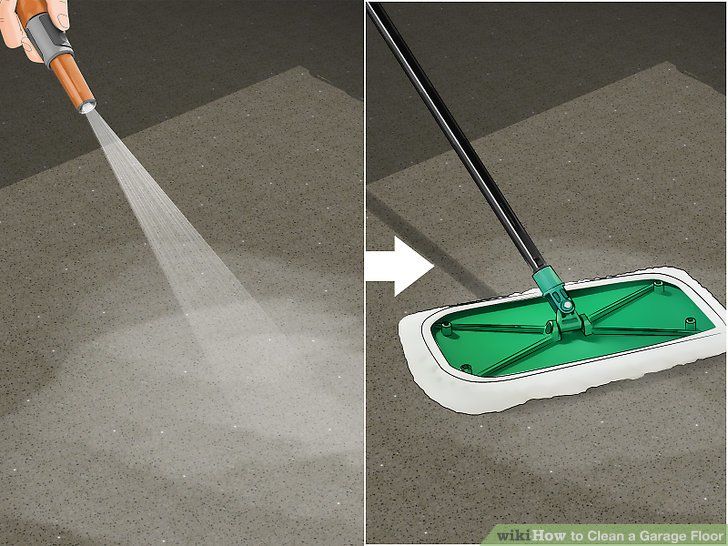
When your car is in your garage or driveway, your tires tend to be in contact with the same spot in the garage every night. Over time, you will end up seeing four tire marks on the spot where your car tires sit on your garage. This is due to the plasticizers build up on your concrete garage floor.
And if you think high quality tires will not leave marks on your floor, think again. High quality performance tires, use higher quantity of plasticizers.
When your car tires are hot, they expand. When they cool down, they shrink. Because of the weight of the car and the shrinkage of the tires, just a wee bit of the concrete sealer or the epoxy coating is pulled off the concrete garage floor. This builds up over a period of time as the car is pretty much parked at the same spot every night.
This can be most noticeable when you have a coating on your floor that has not bonded with the concrete floor. When that's the case, your car tires can lift a big chunk of the coating when you drive off.
Let's face it, roads are not the cleanest places. When you drive, your tires collect whatever is on the road, from oils, dirt, rocks and even roadkill.
When you drive in, your tires are going to leave some of that on your driveway and your garage floor. They are easy to detect as they are streaks. Thankfully they are also not that hard to clean.
So how easy is to remove tire marks from your sealed garage floor or driveway. Well this really depends on how long the tire marks have been on the floor and on the quality of your topcoat. The secret to easily removing tire marks is, to remove them as soon as they appeared.
The easiest way to attempt removing tire marks is to soak the area for a few minutes first with a good cleaner or a concrete degreaser. After it has soaked, use a semi stiff nylon bristle brush to scrub the tire marks. Avoid if possible using a scrub pad as these can de-gloss the finish.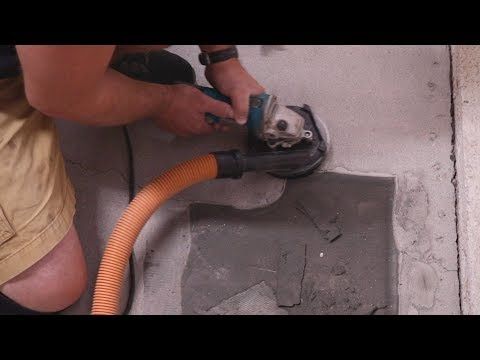 Don't be surprised if the tire marks don't disappear from the first time. It can take a lot of soaking and scrubbing, depending on how long the marks have been on the floor.
Don't be surprised if the tire marks don't disappear from the first time. It can take a lot of soaking and scrubbing, depending on how long the marks have been on the floor.
If this method doesn't work or the build up is quite big, you can always use a product designed for removing tire marks.
The best way to prevent car tire markings is routinely cleaning your garage floor. Using a mop with mild detergent once or twice a week will prevent any build ups or staining.
Lastly if you are not big on driving and your car tends to sit more in your garage than moving on the road, you can always place carpet, carboard or nylon sheets under your tires. Anything really that you can easily discard after awhile.
Make a paste of 1 part warm water and 3 parts baking soda in a small bowl.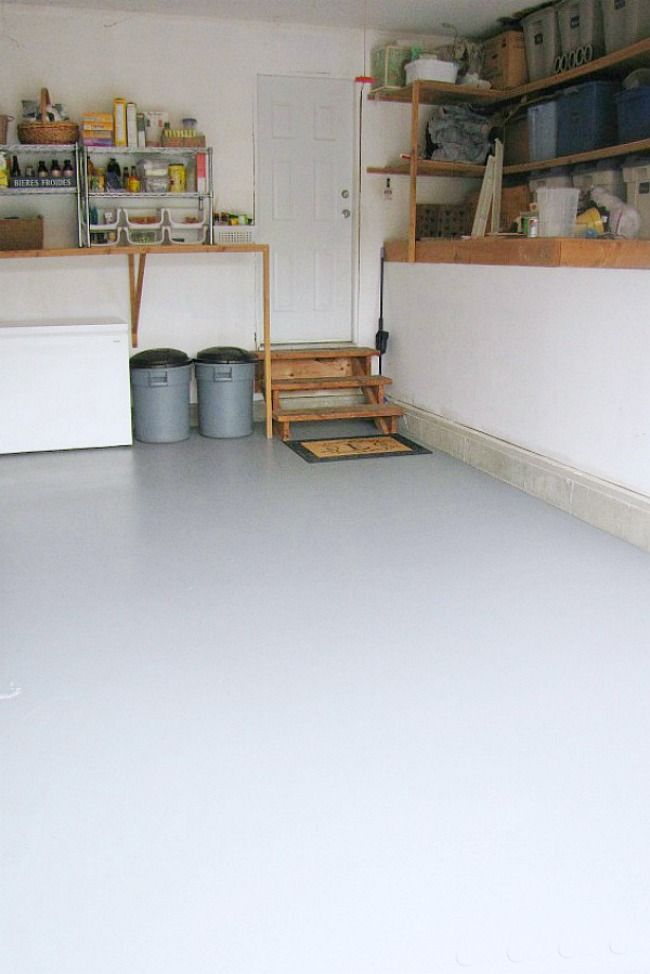 Apply the paste on the stain and leave for 5 minutes. If the stain is persistent, leave on for 15 minutes. Scrape off the paste with a toothbrush and tissue, and then wipe off any excess paste with a clean rag.
Apply the paste on the stain and leave for 5 minutes. If the stain is persistent, leave on for 15 minutes. Scrape off the paste with a toothbrush and tissue, and then wipe off any excess paste with a clean rag.
Traces of from rubber, shoe polish and other oily substances can be carefully removed with gasoline. In the absence of fleecy fabric in the household, it can also be useful for removing stains from candles.
Pre-treat oil stains and tire marks before attempting to clean the entire surface. This can be done by covering the stains with laundry detergent. Pour a generous amount of detergent directly onto the stain.
Buy regular glycerin from a pharmacy, mix 100 grams of glycerin with 100 grams of water, then apply with a sponge to the rubber. Do not spare water, otherwise dust will stick to tires . Another tires are blackened with silicone oil, which will save tires in cold weather, protect against cracks and sunlight that age rubber.
It is safe for rubber but effectively removes yellowness. If the product is small, it can be completely immersed in liquid. When this is not possible, peroxide is applied to a cotton pad and treated with stain .
Mix water and baking soda, apply the mixture on the stain, let it dry, and finally rinse the area with warm, clean water. Spot on on paper wallpaper try to treat with dry baby powder (or talcum powder) and leave for a while.
If putty has ingrained into the structure of linoleum, it can be removed with mineral spirits. Traces of adhesive tape or plaster, on which dirt and dust have stuck, can be easily removed with vegetable oil or vodka.
Yellow spots on linoleum while still fresh, wash with a warm solution of 72% laundry soap. To do this, it must be grated on a fine grater and dissolved in warm water (100 g of chips per bucket of water). Soak a sponge, cloth or brush in the resulting solution and work spot .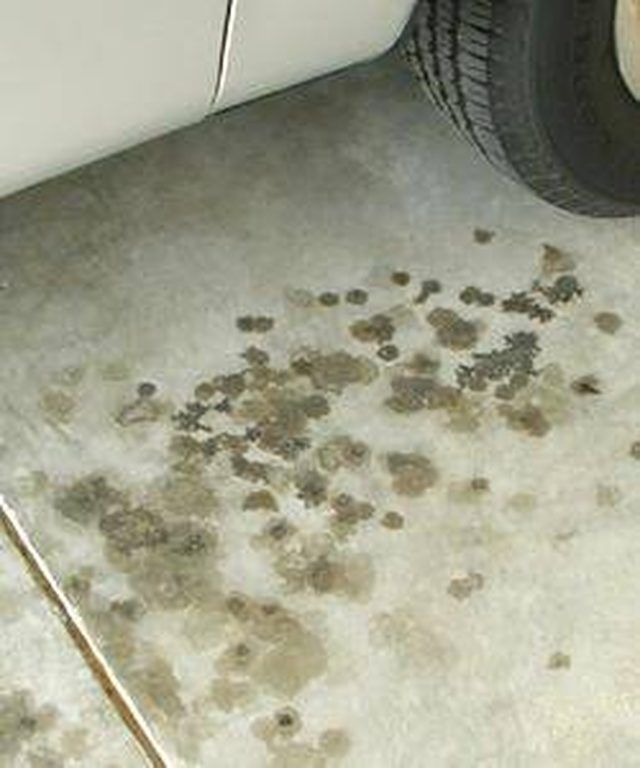 Then wipe the floor dry.
Then wipe the floor dry.
Within 5-7 minutes the bleach will react with the pigment and the stain will gradually disappear. Instead of pure bleach, you can use ready-made products containing chlorine, such as Domestos or Whiteness. Important! After bleaching on dark linoleum, whitish traces may remain.
Laundry detergent will react with wet asphalt and then begin to peel off dirt from the surface layer of asphalt . 4. Mix the cleaning agent with water in a container. The proportion of the solution is the following proportions, 1 part washing powder, 3 parts water and 1 part laundry bleach.
It is necessary to quickly cover it with sand, caustic soda or cement, and then simply remove all . Remaining stains can be washed off with solvent (solvent, white spirit, etc.), detergents.
As soon as a stain of engine oil or diesel fuel appears on asphalt , it is covered with sand, cement, caustic soda. Then they sweep away the remnants, wash everything off with water from a hose or a watering machine.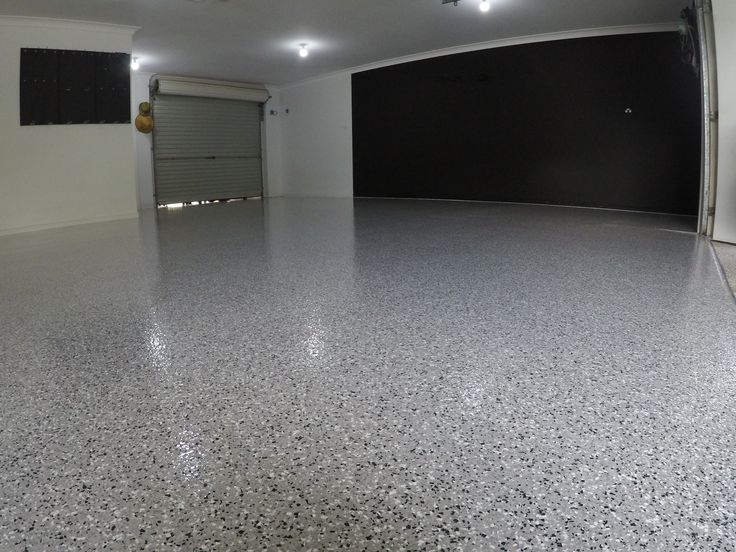 Mechanical cleaning is not recommended.
Mechanical cleaning is not recommended.
Siral powder (or pemolux - less foam from it) + fine fine sand, mix, add water (not much) so that the consistency is - a la ice cream 5-10 minutes after getting out of the refrigerator ... .. you can stupidly and in fairies throw a little abrasive .... the very collective farm - a helmet for rubber - and forward !!!
Often we washed the wheels by simply placing them in a bowl of water and slowly turning it in the water to wash away all the dirt. The wheel (rims and spokes) are not afraid of water, but after washing with a jet, it is still better to wipe them again with a sponge, and then with a dry cloth.
Substances such as nail polish remover (acetone), gasoline, kerosene, turpentine are aggressive to many materials. Use them very carefully.
…
Vinegar and white
Garage flooring is a big deal. It must withstand the serious weight of the car, the fall of heavy tools, and also not absorb oil and gasoline. Modern, high-quality and durable material - rubber coating. Let's take it apart and talk about all the advantages.
Where traditional concrete garage floors used to be the dream of every car owner, today the world recognizes non-delivery of coatings. It crumbles, dusts, absorbs fuel oil and oil, cracks, retains moisture and causes an unpleasant smell, mold in the garage. That is why concrete as a coating has not been used for a long time. Now it is a high-quality basis for a topcoat, which can be made from various materials.
PVC floor tiles in the garage
Rubber floor coverings are made from crumb rubber. The raw materials are mixed with adhesives and dyes, after which they are given the desired shape.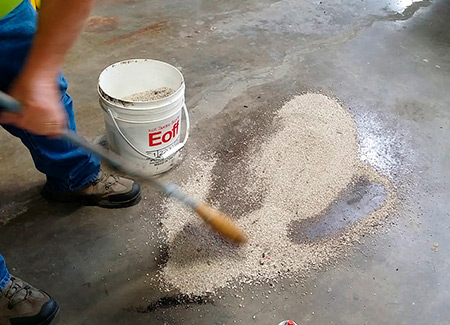 The result is a durable material that is resistant to aggressive substances and heavy weight. Suitable for any garage.
The result is a durable material that is resistant to aggressive substances and heavy weight. Suitable for any garage.
Rubber floor coverings quickly began to be used everywhere: in garages, in production, at children's and sports grounds. They can also be found on the territory of hotels, gyms, summer cafes ... The scope of application is very wide and fully justified by the characteristics of the material.
However, rubber garage floors have only two drawbacks. You will not always succeed in laying the material yourself. You need special equipment and skill, so this moment is best left to specialists. Despite the increased strength of rubber, you should not lay it next to open sources of fire.
You will not always succeed in laying the material yourself. You need special equipment and skill, so this moment is best left to specialists. Despite the increased strength of rubber, you should not lay it next to open sources of fire.
An example of a garage floor design. PVC tiles
Before choosing a rubber coating, you need to evaluate the weight of the car and the temperature in the garage. In most cases, a thickness of 5 mm is sufficient. The second point is whether there is underground groundwater under your garage.
Rubber flooring available in four versions:
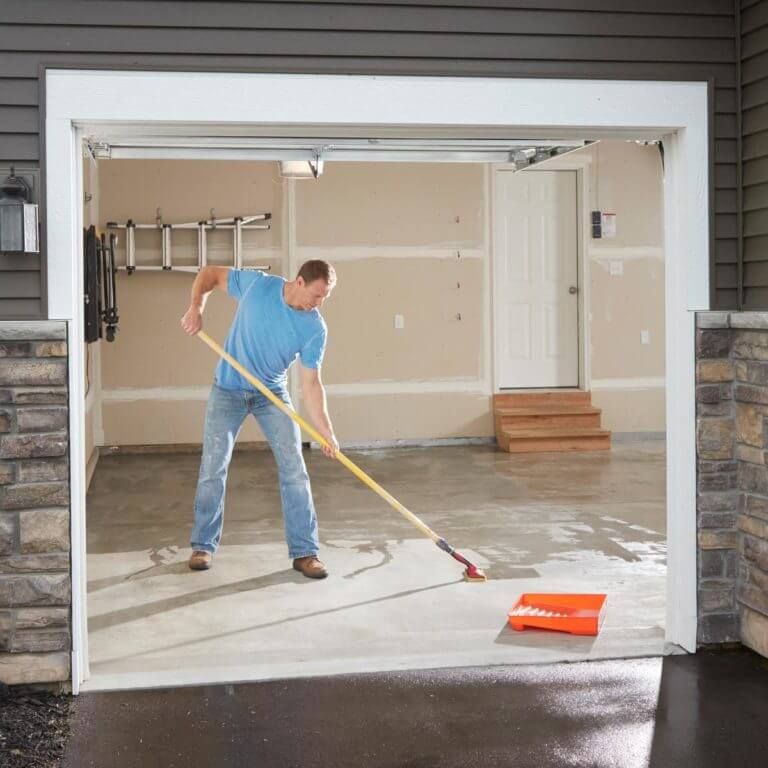 Also, you are unlikely to be able to roll out the rolls yourself, fit them to the garage area and glue them well.
Also, you are unlikely to be able to roll out the rolls yourself, fit them to the garage area and glue them well.  You can put it in front of the entrance to the garage, so as not to bring in excess dirt. They will also protect the floor from melt water, sleet and fine gravel. Often they are used where you can slip while repairing the car or when leaving it.
You can put it in front of the entrance to the garage, so as not to bring in excess dirt. They will also protect the floor from melt water, sleet and fine gravel. Often they are used where you can slip while repairing the car or when leaving it.
Rubber floor covering safe and aesthetic
In order for the rubber flooring in the garage to last a good 10 to 15 years, it is important to install it correctly. The principle is basically the same: clean the base area, level and glue. But each type of material has its own styling features. They affect the cost of installing the coating and the ability / impossibility of doing it on your own.
It is laid directly on the screed, which should be with a slight slope towards the exit from the garage. Then you will not have problems with the flow of water. Rolls must first be rolled out so that the material straightens and takes the correct shape.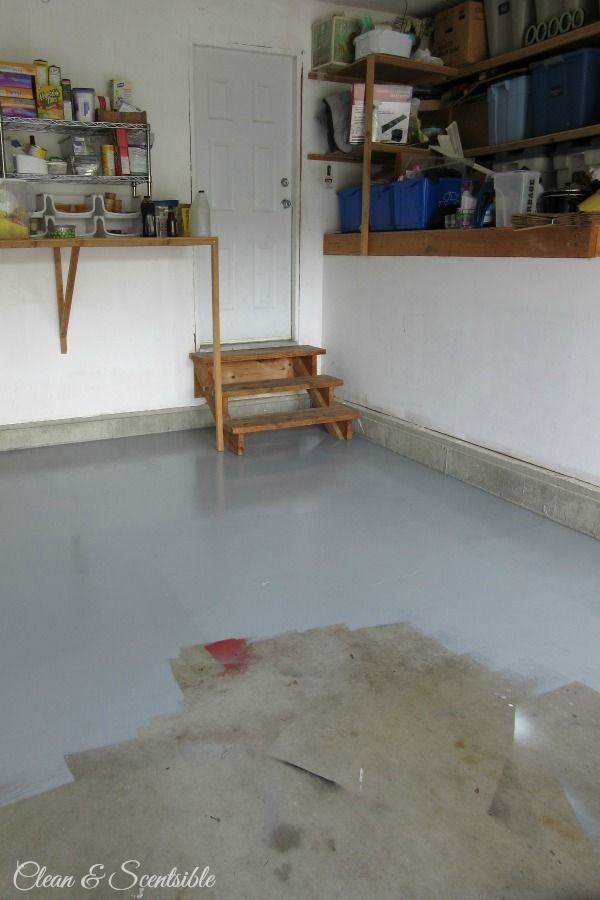
Before laying the roll covering, the base must be leveled with a rough screed. After 2-3 days, it is covered with polyethylene and they look to see if condensation has appeared. If not, then the screed is dry and you can start laying the base coat.
Vacuum the surface immediately before, remove all grease stains and cover with a rubber solution. The rolls are rolled out, adjusted to size and glued to a special two-component adhesive. Its excess is squeezed out through the seams. The result is a smooth, almost seamless surface.
The main advantage of the material is its quick installation. And in most cases, you can do without glue. From the pleasant: the material allows for slight irregularities in the base. The rubber tile keeps within both on a coupler, and on the asphalt concrete basis. If it has locks and connector sleeves, you can not use glue. Are there any such connections? Then you need a polyurethane-based adhesive.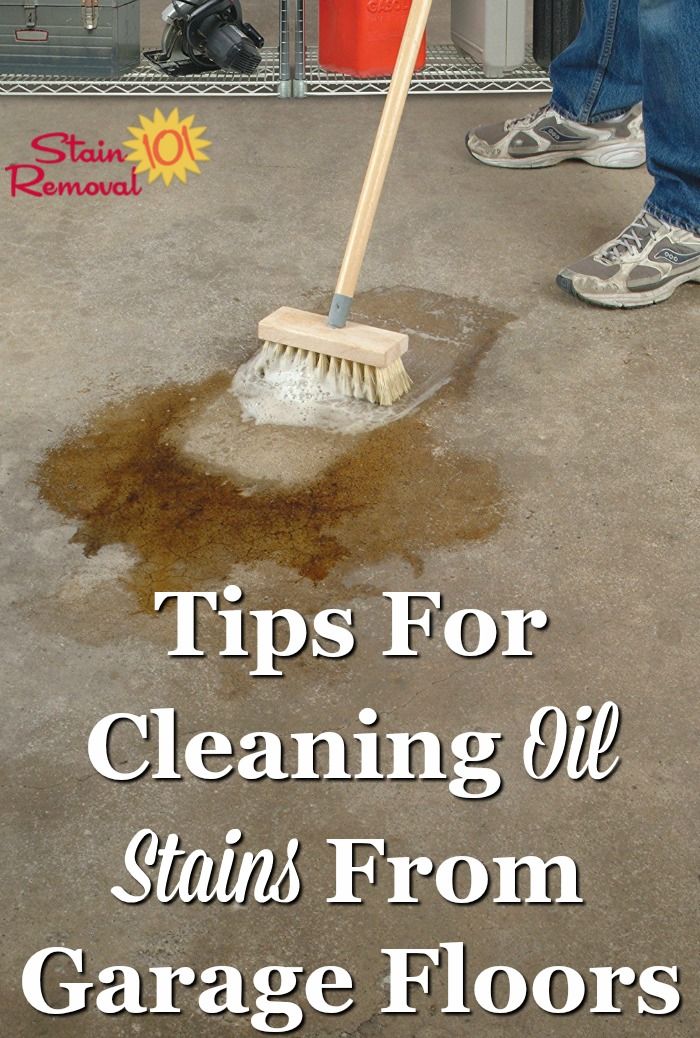
In the case of glue, the surface must be prepared beforehand: vacuum, clean from oil and paint stains. Immediately before laying, the base must be primed. This will reduce the consumption of glue and bind the smallest dust that cannot be removed manually. Excess glue is also removed through the seams.
Locks on modular rubber tiles
Self-levelling rubber flooring, like all other finishes, requires preliminary surface preparation. The base is leveled, debris and dust are removed. The screed should never be loose or wet. If the garage is small, the floors are poured by hand. To do this, the mixture is thoroughly mixed and leveled with a special tool.
For large areas, it is better to use an automatic sprayer. As a result, you get a seamless homogeneous coating, which at the same time serves as a waterproofing from groundwater. Of the features of the material: it cannot be applied to an inclined surface - this can lead to uneven distribution.